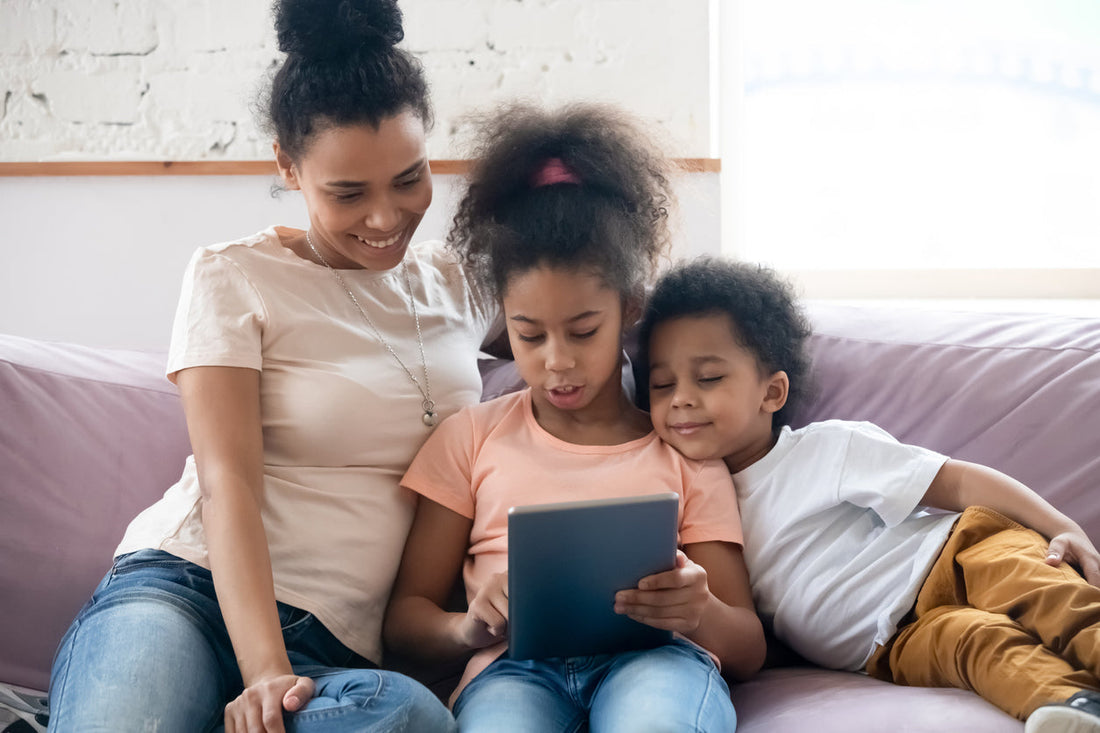
Play-Based Learning in the Digital Age
As parents of four kids ages six and under, we are careful with not only the amount of time they are on screens, but what apps, games, and shows have their attention. A recent study published in the Journal of the American Medical Association found the time young children spend in front of the screen is increasing. There’s lots of interesting data in the report, including that twins were more likely to belong to the highest screen time group (didn’t say why they think that is, but as a parent of twins, I can see why that is). They came up with some guidelines for the two to five set:
The study found that the average time children spend in front of screens increased from 53 minutes at 12 months per day to more than 150 minutes at 3 years – time periods that greatly exceed recommendations from the American Pediatric Academy that digital media exposure should be avoided for children under 18 months of age, introduced slowly to children 18 to 24 months of age and limited to an hour a day for children from 2 to 5 years of age.

But like you, I don’t need a study to tell me that screens are a part of kids’ lives (after all they see us on them throughout the day). And probably like you, we try to set some healthy boundaries on how much time our kids spend on screens and what they are doing on them. I know we’re all trying to do our best to manage this screen time relationship in this new and age.
Playper’s Digital Aspect
We set out to create an experience that was built on play-based learning and include the components they need to create their own world. Starting with the Curious Kingdom, they receive a 22-piece, eco-friendly playset plus exclusive access to an app with stories, games, and digital experiences. We challenged ourselves to unite those two worlds into something cohesive and fun.
We are not the first to do this, so when we started down the path of creating interactive story-inspired play involving the playset they assemble and a corresponding app, we wanted to create something that wasn’t gimmicky. We wanted the two “worlds” to be integrated. We started with the device: The phone/tablet is not just a screen; it is now a magic wand that unlocks the experience. By scanning the face of a Playper character, that character magically enters the digital world. There’s engaging sparkles, sound effects, and more as the character “comes to life” on the screen.
We are committed to creating a healthy, imaginative experience that won’t lead the child to just focus on the digital part (and turn into the dreaded “screen zombies”). Watching my own kids play, I saw how it’s just too easy for the child to be comfortable being passive and stay on the screen indefinitely. We wanted to make the two completely symbiotic and intertwined. So, the challenge became how to get the child to go back and forth between the physical playset and the app.
And let me tell you, it was a fun challenge.
Story-Driven Interactivity
The digital side of our toys (via the free app) is fully interactive, including learning games that kids love to play, but we've been careful not to create just another preschool game that kids will get fixated on. What's different?

The app is completely story-driven, and each game and activity is designed to enhance the story and to propel it forward. A child might have to tap something, or move something, or make a choice, in order to continue the story. The best part is that the app drives the child to the playset to interact with the physical toys during the digital play, combining them both into one enriching experience. There might be a treasure chest that needs a special key, and that key can be found in the playset's castle – match it with the app, and the treasure chest is unlocked.
My favorite part of all this is that the stories never really end. The app prompts kids to go back to the playset, where they can continue the story or start an entirely new one. So, say when Princess Petunia and Snuffles the dragon are reunited in one adventure, we invite the child to imagine what adventure they go on next, and to tell their own tale with the toys.
Everyone here at Playper are parents and accept that smart devices are part of our children’s lives. So, the question becomes, can we create something where we can maximize the play-based learning potential of that technology while also keeping their imagination engaged in the “real world” of physical toys?
We think we have.